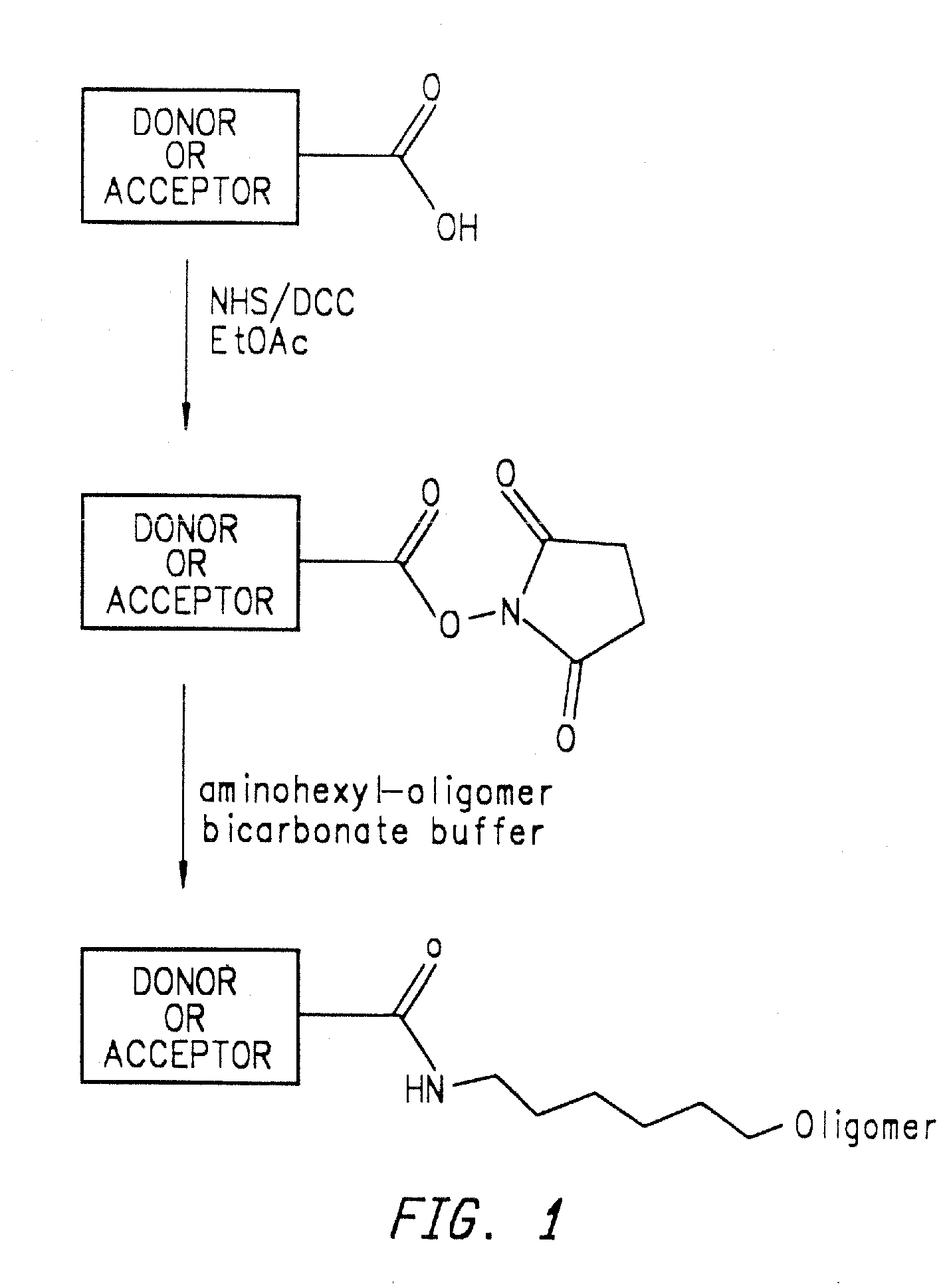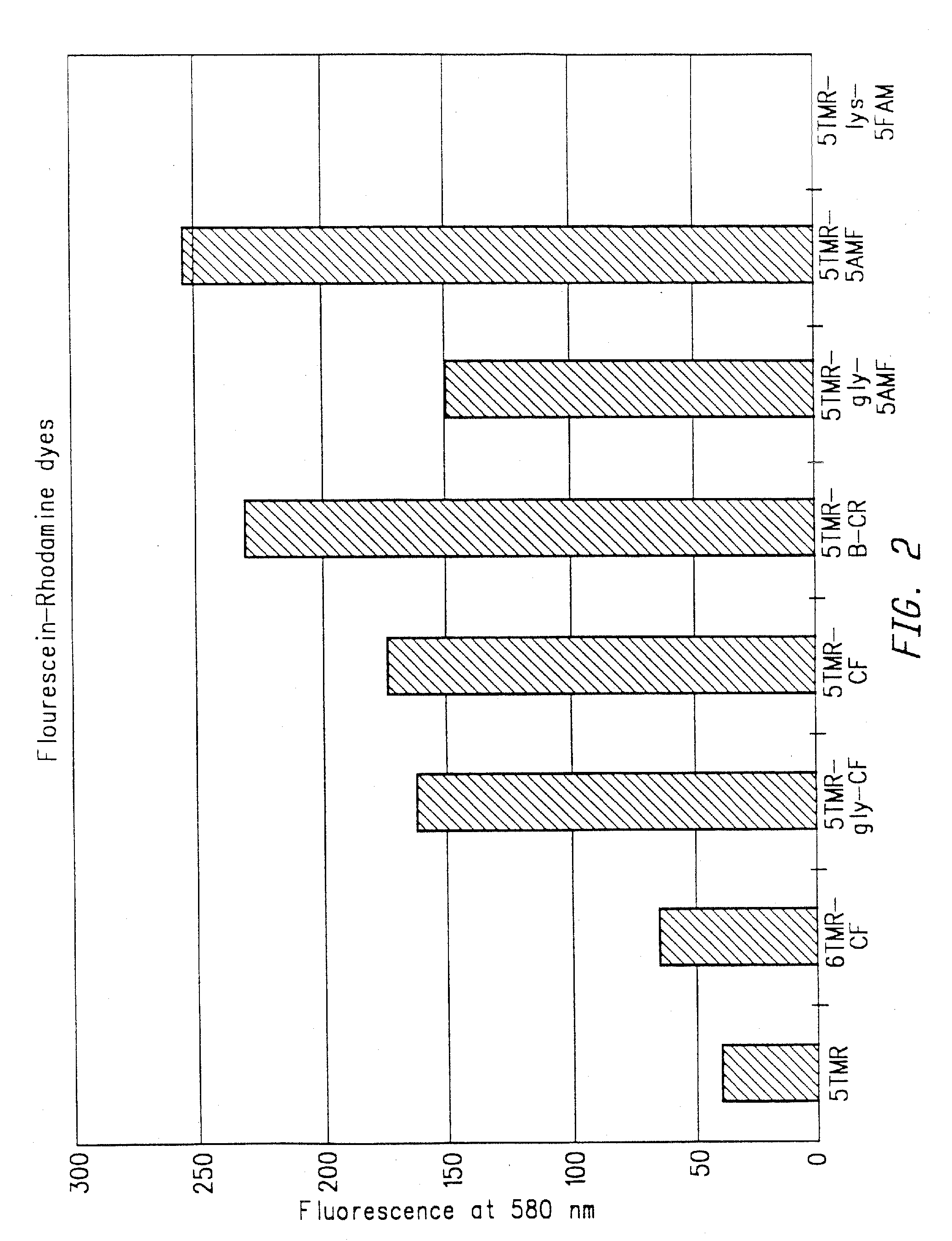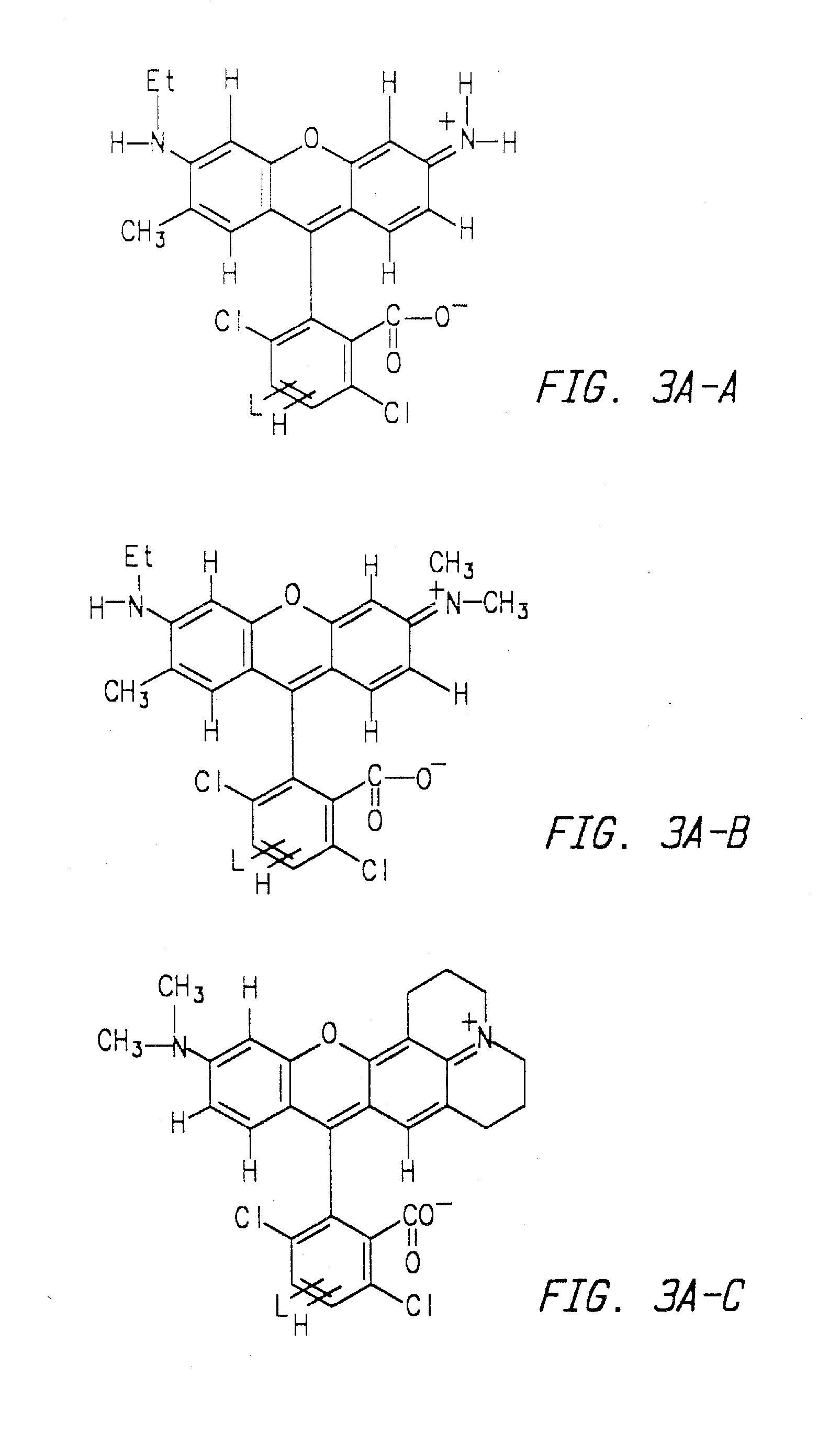Methods of analyzing polynucleotides employing energy transfer dyes
a polynucleotide and energy transfer technology, applied in the field of fluorescent dyes, can solve the problems of wide spectrum, difficult to find a collection of dyes whose emission spectra are spectrally resolved, and generally not having the same absorbance maximum, etc., to achieve short and/or rigid, enhance the effect of energy transfer
- Summary
- Abstract
- Description
- Claims
- Application Information
AI Technical Summary
Benefits of technology
Problems solved by technology
Method used
Image
Examples
example 1
Synthesis of 5TMR-B-CF
[0215]
[0216] 5TMR-B-CF was synthesized from 5-TMR NHS and 4′-aminomethyl-5-carboxyfluorescein according to the reaction sequences described in Examples 1A-C. 5TMR-B-CF was then converted to 5TMR-B-CF-NHS according to the reaction sequence described in ID so that the dye could be coupled to a nucleoside, nucleotide or oligonucleotide primer.
example 1a
Synthesis of 5-TMR-B
[0217]
[0218] A mixture of 4-aminomethylbenzoic acid (3 mg, 19 μmol), 5-TMR NHS (5 mg, 9 μmol) and triethylamine (20 μL) was suspended in dimethylformamide (DMF, 200 μL) in a 1.5-mL eppendorf tube. The mixture was heated to 60° C. for 10 minutes. Reaction progress was monitored by thin layer chromatography (TLC) on silica gel with elution with a 400 / 30 / 10 mixture of dichloromethane, methanol and acetic acid. The insoluble 4-aminomethylbenzoic acid was separated by centrifugation and the DMF solution was decanted into 5% HCl (1 mL). The insoluble 5TMR-B was separated by centrifugation, washed with 5% HCl (2×1 mL) and dried in a vacuum centrifuge. The product was dissolved in DMF (200 μL) and used to prepare 5TMR-B-NHS.
example 1b
Synthesis of 5-TMR-B-NHS
[0219]
[0220] A solution of 5TMR-B in DMF (125 μL), diisopropylethylamine (10 μL) and disuccinimidylcarbonate (10 mg) was combined in a 1.5-mL eppendorf tube and heated to 60° C. The reaction progress was monitored by TLC on silica gel with elution with a 600 / 60 / 16 mixture of dichloromethane, methanol and acetic acid. After five minutes, the reaction appeared to be complete. The solution was diluted into methylene chloride (3 mL) and washed with 250 mM carbonate / bicarbonate buffer (pH 9, 4×1 mL), dried (Na2SO4) and concentrated to dryness on a vacuum centrifuge. The solid was dissolved in DMF (100 μL). The yield was determined by diluting an aliquot into pH 9 buffer and measuring the absorbance at 552 nm. Using an extinction coefficient of 50,000 cm−1 M−1, the concentration of 5TMR-B-NHS was 4.8 mM. Yield from 5TMR NHS was 8%.
PUM
| Property | Measurement | Unit |
|---|---|---|
| Length | aaaaa | aaaaa |
| Energy | aaaaa | aaaaa |
Abstract
Description
Claims
Application Information
 Login to View More
Login to View More - R&D
- Intellectual Property
- Life Sciences
- Materials
- Tech Scout
- Unparalleled Data Quality
- Higher Quality Content
- 60% Fewer Hallucinations
Browse by: Latest US Patents, China's latest patents, Technical Efficacy Thesaurus, Application Domain, Technology Topic, Popular Technical Reports.
© 2025 PatSnap. All rights reserved.Legal|Privacy policy|Modern Slavery Act Transparency Statement|Sitemap|About US| Contact US: help@patsnap.com



